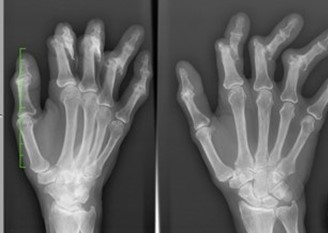- Learn to maintain flexibility.
If you are going through physical or occupational therapy, make sure that you do the simple exercises that are taught you at home. The simple stretches as well as the gentle movements will be good for your joints and mobility, especially if you have been sitting or not moving for long periods of time. Don’t overdo it, though.
- Make sure you distribute loads.
It is crucial that you don’t do anything to injure your joints. If you have psoriatic arthritis, your joints are highly susceptible to damage. When you are carrying something, pushing or pulling, it is important that you protect your joints by moving properly. When you are carrying groceries, your child, or other heavy things, you should distribute the weight evenly so that there is no too much pressure on just one joint. Always use two hands when you carry something and do not just carry your bag on one shoulder. These simple things can go a long way in helping you keep your joints safe.
- Use hot and cold therapy.
Use cold therapy or ice therapy when your joints are hot. When your joints are stiff, use warm compress. Always remember to cover the ice packs with a towel so that you won’t burn your skin. An electric heating pad is a good heat therapy method and is safer than hot water bottles. You can also use a gel-filled heat pack or a heat lamp. You can get a good soak in a warm bath to soothe the joints. You can also get massages to relieve the stiffness and aching joints.
- Reduce your stress.
One of the lifestyle changes to manage your stress. As discussed in detail previously, stress is never good for anyone. Make sure you do stress management techniques daily. Other things to do to help you reduce stress include: avoiding caffeine, alcohol, and nicotine, indulging in physical activity, getting more sleep, talking to someone about your condition, taking control of your life and schedule by managing your time, and keeping a stress diary.
- Respect your limitations.
Never push yourself. You need to learn to listen to your joints. Even if you want to do something so bad, when you feel that your joints are suffering, just stop. Nothing is more important than keeping your joints safe and mobile. When you lose it, it’s gone and you can’t get them back. Similarly, when you don’t move them, you also face the risk of damage. How do you know when you should move and when you should rest? When your joints feel achy and they are stiff, that it’s the time to gently move and mobilize them. When you feel that they are swollen and tender, then you should rest them as much as you can. Exercise can relieve the symptoms of psoriatic arthritis, but you have to consider how your joints are feeling at the moment, especially when they are tired and in pain. You can’t just jump to exercising. You have to understand where your body is at present before you build it up.
- Take pain medications as needed and prescribed.
Even if you believe in the power of natural remedies, don’t be afraid to take pain medication when absolutely necessary. Not all medications are bad for the body, even if there are some side effects. Some of them can reduce pain significantly and allow you to go about your day with ease. Talk to a doctor and get the best pain medication you can find.
Remember to always bring your medication with you as you don’t know when the psoriatic arthritis symptoms will flare up. Always have them on hand so that you can get them or someone can get them for you easily. Don’t go out of the house without your prescribed medications. It will make your life easier.
- Wear good shoes.
Patients with psoriatic arthritis suffer from foot problems as well as pain in their ankles. Often, your ankles will be swollen and you won’t be able to fit them in regular shoes. Make sure that you get and wear good shoes so that you don’t have to suffer the pain in your feet. There are shoes that have a high toe box. You can also use shoe inserts and heel cups. Or you can get a shoe size that is wider than your normal size. These simple things will help in your daily activities as you will relieve foot pain. If, however, changing shoe sizes and using inserts or soft pads won’t work for you, it is best to visit a podiatrist for a more specific solution.
- Take daily power naps.
Never underestimate the power of a short rest. They are not called power naps for no reason. You need that extra burst of energy especially when you are dealing with pain and inflammation the whole day. The symptoms of psoriatic arthritis can cause fatigue even to the strongest and healthiest of people. To make sure that you don’t suffer from chronic fatigue and weakness, take short breaks and get some power naps. A ten or fifteen-minute nap can do wonders not just to your body, but to your mind and emotions as well.
Getting extra rest is very important especially for people with a heavy workload, busy schedules or those with kids. But you can’t just stop everything—that is why you need to pace yourself. Don’t do too many things at one don’t take on more than you can handle, take good amounts of rest during the day and get enough sleep. Think about it, the chores can wait. If you get overcome by fatigue, you won’t be able to function well anyway. If you need to take a sick day, take it. Your health is more important than any to-do list.
- Focus on positive things.
Positivity has often helped improved many health conditions, whether physical or mental. The same is true for cases of psoriatic arthritis. It won’t be an easy journey and it will be highly likely that you may often feel lonely and tired. You can draw inspiration from your family, especially if you have children. You can practice mindfulness meditation. Always look for the silver lining. Find someone who can speak life and motivation into you. You don’t have to give up. There are still so many good things about life that you can enjoy and when you focus on the positive things, you will bring a lightness into your life and reduce any form of stress that can trigger inflammation or other symptoms.
- Ask for help (or be the help).
A lot of people who suffer from psoriatic arthritis would rather just call in sick instead of ask for help when they feel that the symptoms are affecting their ability to work. Talk with your superior about making necessary adjustments that can help you function better while at work. If you are someone who works with or lives with a person suffering from psoriatic arthritis, ask them what kind of help they need so that they can function better and with ease. Offer as much help as you can. For instance, don’t place everyday items into high shelves or cabinets; make sure that tables and chairs are ergonomic, etc. These may be little things, but they can ring great relief to people with swollen or stiff joints and reduced range of mobility. The less these people struggle with pain, the less the possibility of flare ups.
You think these tips are easy? Yes, they are. But they can bring remarkable increase to the quality of your daily life as you deal with psoriatic arthritis. But here is the most important thing: nothing will happen and you will get no benefit simply by reading. You need to get started today! Life with psoriatic arthritis can be difficult, but it can be managed. Some days can be tougher than others, but stay strong and keep on going. It is also advisable to check in regularly with your doctor or therapist so that your progress can be monitored and other problems can be avoided. Sometimes, all you need is just a little tweak in your medication or physical therapy and your symptoms can be reduced significantly.






 I love to write medical education books. My books are written for everyone in an easy to read and understandable style.
I love to write medical education books. My books are written for everyone in an easy to read and understandable style.